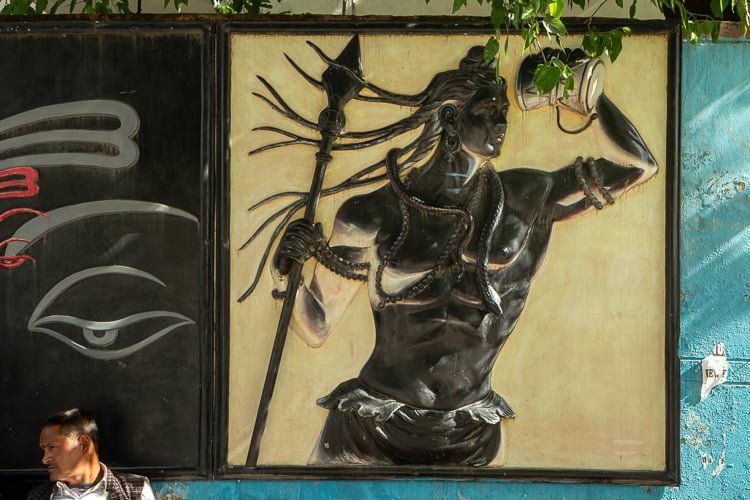“There is no such country, and this is the first and most essential fact about India that can be learned. India is a name, which we give to to a great region including a multitude of different countries. There is no general Indian term that corresponds to it.
This is the first and most essential thing to learn about India – that there is not, and never was an India, or even any country of India, possessing, according to European ideas, any sort on unity, physical, political, social and religious: no Indian nation, no ‘people of India’, of which we hear so much….”
Sir John Strachey, official of the British Raj, University of Cambridge, UK, 1880
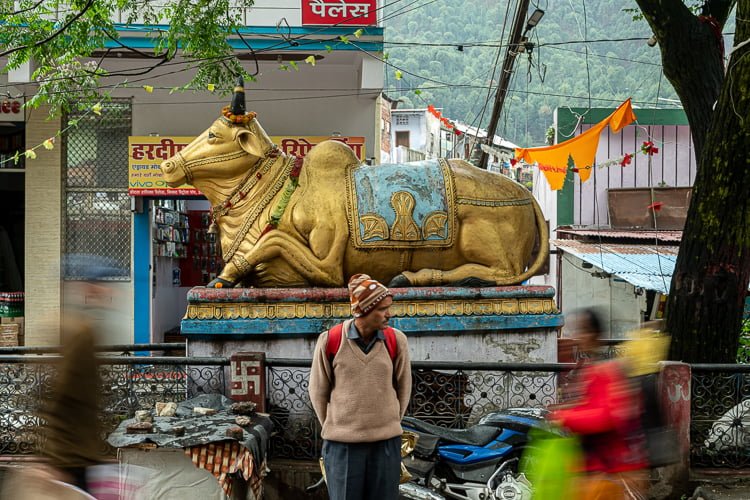
As described in my blog post here the taxi sped me through the night from the hotels of Paherganj, New Delhi, towards Gangotri, high in the Himalayas.
Dawn rose above the sacred cities of Haridwar and Rishikesh, beyond which the road rose into the foothills of the Himalayas, cutting through fold upon fold of valley and hilltops. In the back of the taxi, unwell, I tolerated the journey as best as I could until, after 12 hours and feeling I could go no further along the twisting mountain road, I asked the driver to stop at the next town. He deposited me at the Five Elements hotel on the outskirts of Uttarkashi, at an altitude of 1,150 metres and 235 miles from Delhi.
There is an account in the Ramayana that the mountains of India once had wings and soared across the sky, but habitually landed on towns and cities, inadvertently killing people and animals and priests. A consequence of the latter meant that fewer ajnas ( sacred fire rituals ) were being performed which infuriated the gods. Incensed, Indra ( the king of the demi-gods ) used his thunderbolt weapon to cut the wings off all of the mountains compelling them to remain forever joined to earth, following which, frightened, they entered the sea to hide.
During the following two and a half weeks in the hills of these un-winged mountains I recovered health in Uttarkashi, slowly increasing my time and photography within the town.
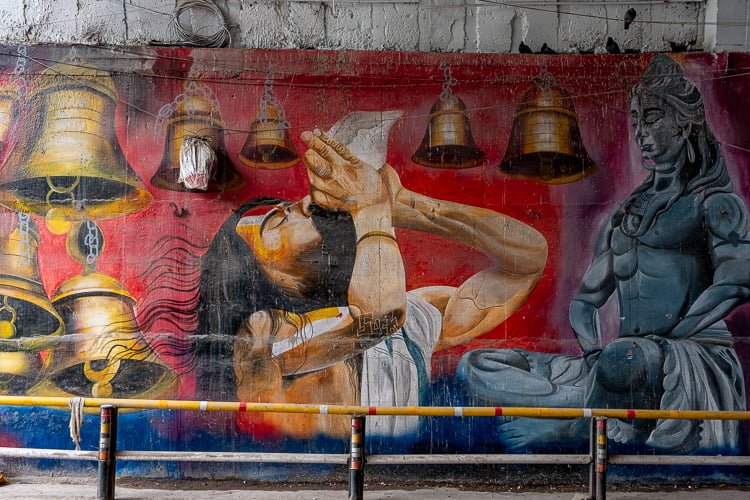
Sir John Strachey graduated from the East India Company College and entered the Bengal Civil Service in 1842. He subsequently occupied many important positions in the British Raj’s occupation of India, including temporary viceroy of India, until his retirement from India in 1880. Following this he co-wrote The Finances and Public Works of India (1882) with his brother and from 1885 to 1895 Strachey was a member of the council of the secretary of state for India. His whole career was India, a country he felt did not exist.
His views clearly demonstrate that Great Britain, and maybe other countries in Europe, at that time had considered non-western countries as inferior, and that it was Britain’s role to modernise and unify India for the first time, whilst at the same time plundering its resources.
So if India as a country did not exist, in what form did it exist?
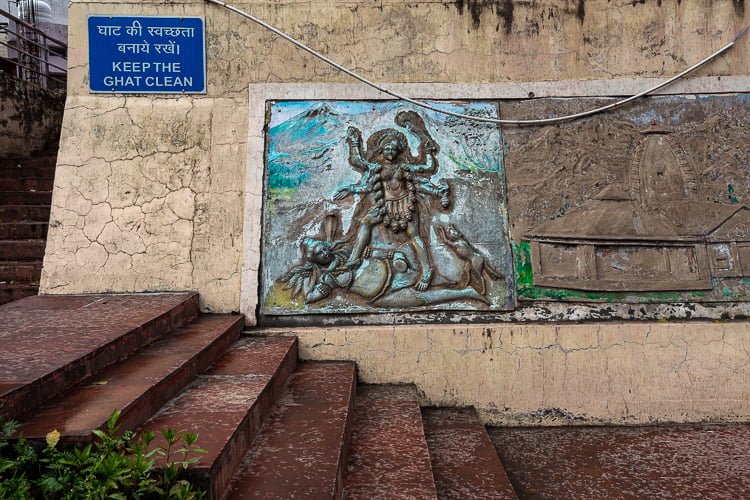
American historian Diana Eck, in her book India : a Sacred Geography suggests an alternative narrative. In reviewing the comprehensive wealth of literature produced in India over the centuries, she suggests that India and its constituent countries and regions were joined, and remain joined, by a neural spiritual network. She attests this has also provided an indelible identity.
She contends that a joined up sacred landscape of India existed before the East India Company’s orientalists provided a more tangible infrastructure, industry and a mapping system which collectively appeared to unite the disparate tribes and states of India. A distinctive feature of that pre-oriental hallowed landscape is the idea that nature itself is sacred, and that features of the landscape can assume a union, or bridge, between the secular and the spiritual worlds. These maybe confluences of rivers, mountains and even whole cities and temples.
Eck suggests these fording points, or tirthas, are described in the earliest texts and have been the points of frequent and wide pilgrimage for centuries. She suggests in the absence of physical maps and boundaries, these meta-physical locations and Hindu pilgrimages to them have assumed a common reference point for both cultural and spiritual identification, and the parables and stories of the texts have imbued common characteristics suggestive of a united nation.
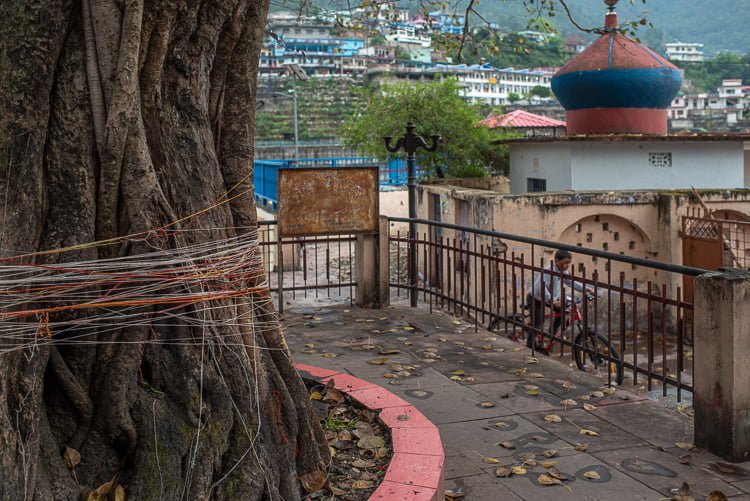
Eck also suggests that another distinctive feature of the sacred landscape of India which infers social cohesion is the apparent repetition of features across the country; numbers, names and legends manifest across the land in an apparently organised manner. Uttarkashi translates to the ‘northern Varanasi’. Similar to Varanasi, Uttarkashi is situated on the Ganges, lies next to a hill named Varunavat, on a confluence of two rivers Varuna and Asi, has a ghat called Manikarnika Ghat and has a temple dedicated to Shiva similar to Kashi Vishwanath Temple in Varanasi, in the center of the town. Other ‘Kashis’ exist throughout India, conveying similar transferable connotation.
The river flowing through Uttarkashi and beneath its several suspension bridges, although a headstream of the river Ganges, is called the Bhagarathi. This is a direct reference to the myth of how the river Ganges, a living goddess, arrived on earth. The legend is described below.
The story of Bhagiratha is narrated in the Ramayana, Mahabharata, and Puranas.
Wanting to show his sovereignty, King Sagara performed a ritual known as ashvamedha, where a horse was left to wander for one year. However, Indra stole the horse to prevent the ritual from being successful. Learning that the horse had disappeared, King Sagara sent his sixty thousand sons to look for it. They eventually found the horse at the ashram of sage Kapila. Thinking that sage Kapila had stolen the horse, the sons interrupted him while he was in deep meditation. This infuriated sage Kapila and with his ascetic’s gaze burned all sixty thousand sons to ashes. King Sagara sent his grandson, Anshuman, to ask sage Kapila what could be done to bring deliverance to their souls
Sage Kapila advised that only the water of the Ganges, which flowed in the heavens, could liberate them. Bhagiratha, Anshuman’s grandson, undertook ascetic practice and won the favour of Brahma and Shiva. Brahma allowed Ganga to descend on earth, while Shiva broke Ganga’s fall in the coils of his hair so that her force would not shatter the earth.
When Ganga descended, Bhagiratha took her through the mountains, foothills, the plains of India, and to the sea where she liberated the sixty thousand sons of King Sagara. Due to Bhagiratha’s role in the descent of the Ganges, the source stream came to be known as Bhagirathi.
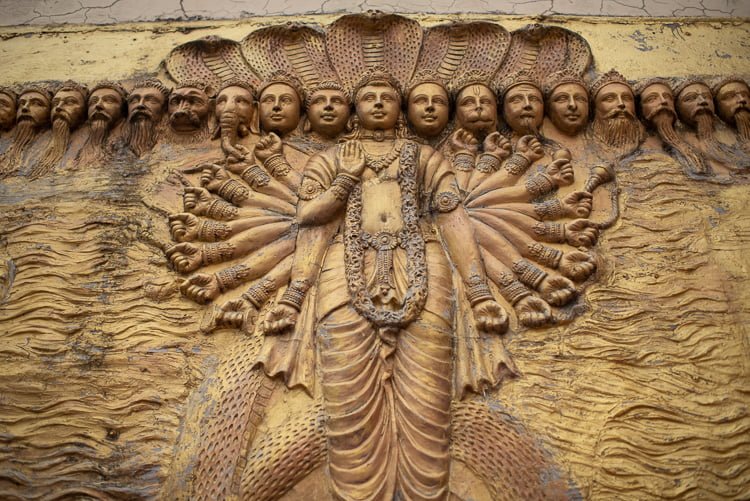
Eck contends pursuasively that the sacred nature of Hinduism pre-existed western occupation, and that the nation of India, known historfically as Bharat ( a name recently used by India’s Prime Minister Modi to promote a Nationalist sentiment ) was effectively unified based upon the legends and mythologies which informed and defined its Hindu identity long before the creation of roads and railways. Pilgrimage and identification with nature, rivers and mountains had existed for aeons. That landscape continues to exist in similar form today.
As I progressed into Uttarkashi, its sacred landscape became manifest. The photographs here depict something of that landscape, focussing on the vicinity of the river Bhagirathi, the eminence of the deity Shiva, some of the wall art, pilgrims undertaking rituals and local residents and customs. The abundance, visibility and meaning of inconography in India is well recognised and has been often described as ‘image worship’, which differentiates the Hindu faith from other religions such as Christianity and Muslim. I shall explore this further in a future post.
A gallery of downloadable images portraying some of this sacred landscape in Uttarkashi is here.
